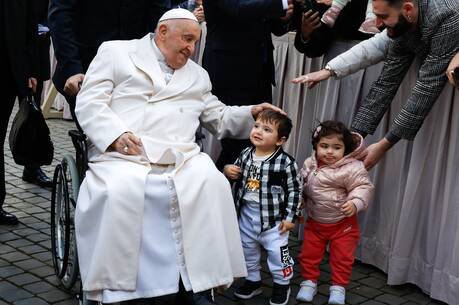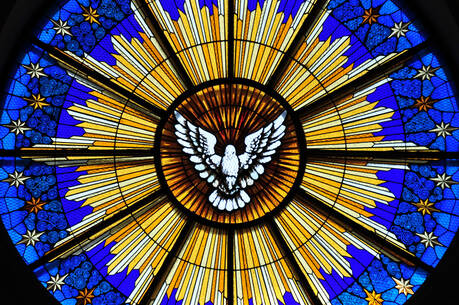It might surprise many to learn that no bishop has ministered to more persons living with AIDS than Cardinal John O’Connor, who by his own report tended to countless patients at St. Clare’s Hospital. I dare say also that no bishop has directly ministered to more priests and bishops who were sick or in trouble. (Cardinal O’Connor was not one to turn these men over to the ministrations of others.) It’s hard to imagine any bishop having delivered more homilies than Cardinal O’Connor, who, except on rare occasions, insisted on preaching at every Mass at which he was presiding. No bishop has met more frequently with reportersas he did formally or informally after Sunday Mass in St. Patrick’s Cathedral. No phalanx of aides stood between him and the media. Surely, no bishop in recent memory has published more homilies, columns and series of columnsmostly in his diocesan newspaper. All this was in stark contrast to his predecessors in New York, Cardinals Spellman and Cooke, who rarely preached, wrote or met with the media.
Cardinal O’Connor felt personally responsible for carrying out the many ministries of a bishop: as teacher, as leader and as pastor. As teacher he was the indefatigable and outspoken representative of the pope and of the magisterium, especially regarding abortion but on other matters as well, avowing that it was his responsibility simply to pass on to others what he himself received. As a leader he took personal responsibility for managing the archdiocese, recruiting men for the priesthood, directing the seminary and founding a religious order of sisters. The responsibility was his; others were his surrogates. As a pastor, he tended to each member of his flock, wherever and whenever he could. He set aside Wednesday mornings to be available to individual priests, who received his full attention for as long as they wished. He found his way to hospital rooms late at night. And when one priest got himself into trouble Cardinal O’Connor took him into his own house for a time of recovery.
But O’Connor’s pastoring was not just with the people and priests of the archdiocese: he was pastor to the city. He reached out to police and firefighters cut down in the line of duty and to their families; to Donald and Ivana Trump when their marriage was deteriorating; to the family of Amadou Diallo, slain in a hail of bullets; to the Yankee pitcher El Duque, arranging that his family from the Dominican Republic could come to share in his triumph.
O’Connor’s pastoring required more than care for individuals. Better than any politician, he forged relationships with the many constituencies that make New York, well, New York. He signaled this intent from the start, spending his first summer learning Spanish in Puerto Rico so he could communicate with a burgeoning segment of New York’s population. The sincerity of his support for the police, for African-American, Hispanic and other ethnic groups, for organized labor, for the Jewish community (to whom he sent a poignant and much appreciated millennial apology) and the political communityespecially during the reign of Mayor Edward I. Koch, with whom he co-authored the book Hizzoner and His Eminenceenabled him to serve as mediator and agent of reconciliation when tensions arose in the city.
Because of the cardinal’s highly personal style, the institutional authority of the church was incarnated in a sharply defined personality. One writer assigned to produce a profile of the cardinal said bitterly: "He uses the press!" "Of course he does," I replied, "and you use him, because he will give you a crisp comment that will make good copy." He seemed to relish the unique potential of serving, in the words of the pope, as "the archbishop of the capital of the world."
No leader is without his critics. Some felt that Cardinal O’Connor’s focus on his personal ministry made him seem excessively self-referential and seemed to leave him little time to invest in the structures of the diocese or the workings of the National Conference of Catholic Bishops. The special place given the order of sisters he founded, the Sisters of Life, seemed to consign the thousands of other sisters in the archdiocese to a lesser place. On the other hand, he left considerable room for others to act as well. Not only was he reluctant to impose any obligations on pastors, he even discontinued an annual mandatory continuing education program for priests that had been inaugurated under Cardinal Cooke. His much-awaited pastoral letter to priests, replete with sympathy for our burdens and asking us to adhere to certain standards of life and ministry, was sent out without any ensuing effort to ensure that we complied with those standards.
On a personal note, I found that, though the cardinal could not support certain parts of my work, such as the Catholic Common Ground Initiative, he both left me considerable freedom and one year even sent a personal check for my work, writing "I’m sure Church [the magazine] deserves support, but Phil Murnion deserves it more."
One final point: I once proposed to him that, in contrast to some others, "You are not conservative, you are traditional." He warmed to the distinction. I meant that he was not ideological, which would have left no quarter for anyone deviating from his position. Rather he was guided by the traditional habits in which he was formed: a combination of unambiguous teaching and generous pastoring. Thus, articulating a "consistent ethic of life" as Cardinal Bernardin did was not Cardinal O’Connor’s style, but his forceful support for life from conception to death, his advocacy for the inner-city poor, his care for persons dying from AIDS, his leadership regarding Huntington’s disease and care for persons with disabilities and his opposition to the death penalty clearly embodied that ethic as well.
Bishop of the church with a mandate to be the authentic voice of official teaching; pastor to the city whose care extended far beyond the bounds of orthodoxy: with a flairthis was Cardinal John O’Connor, the 11th bishop to lead the Catholic Church in New York.







